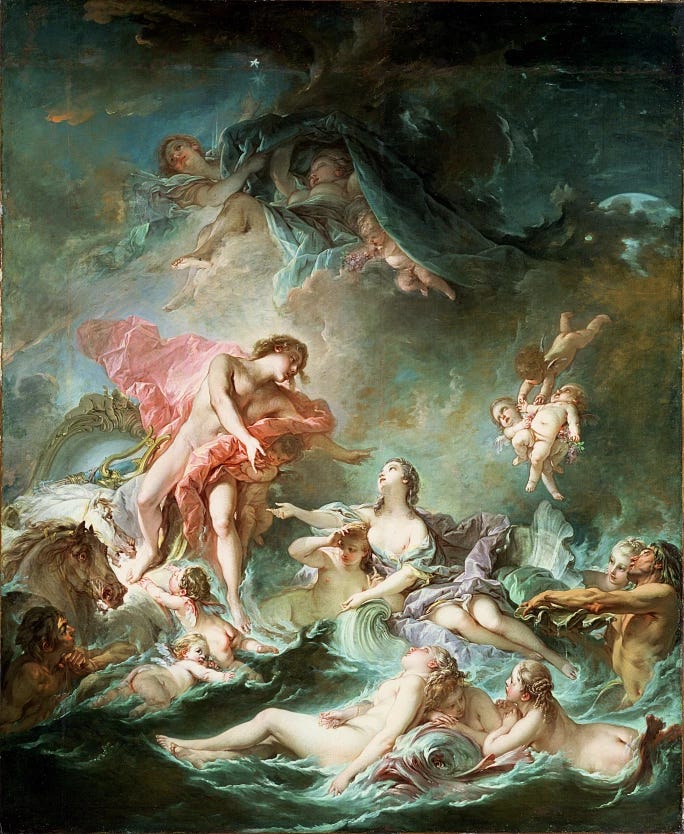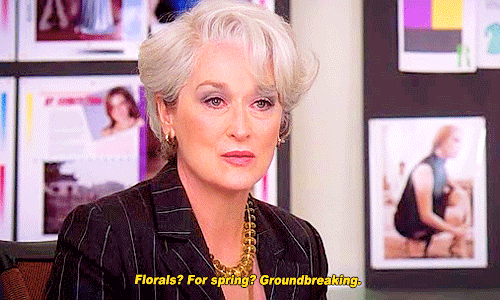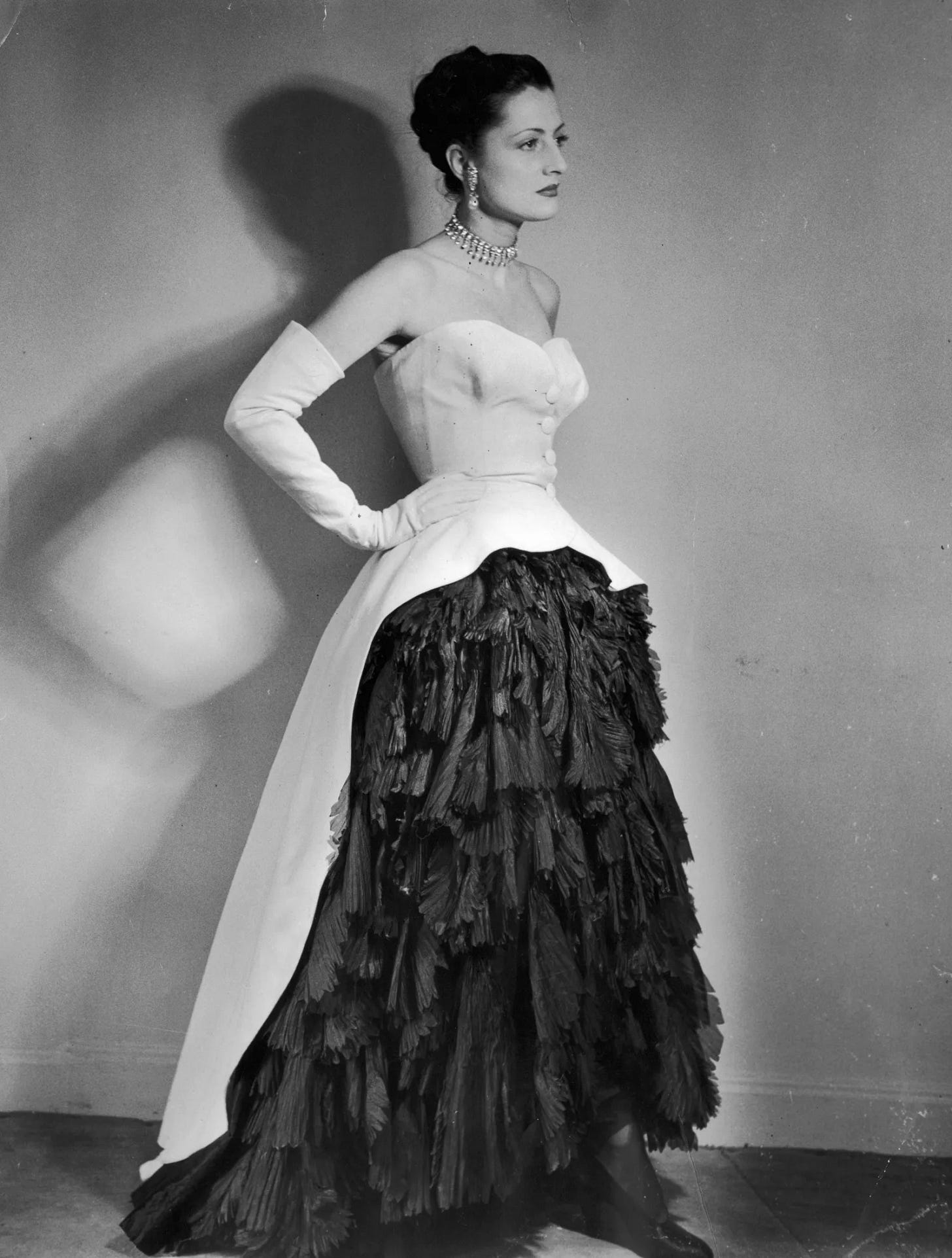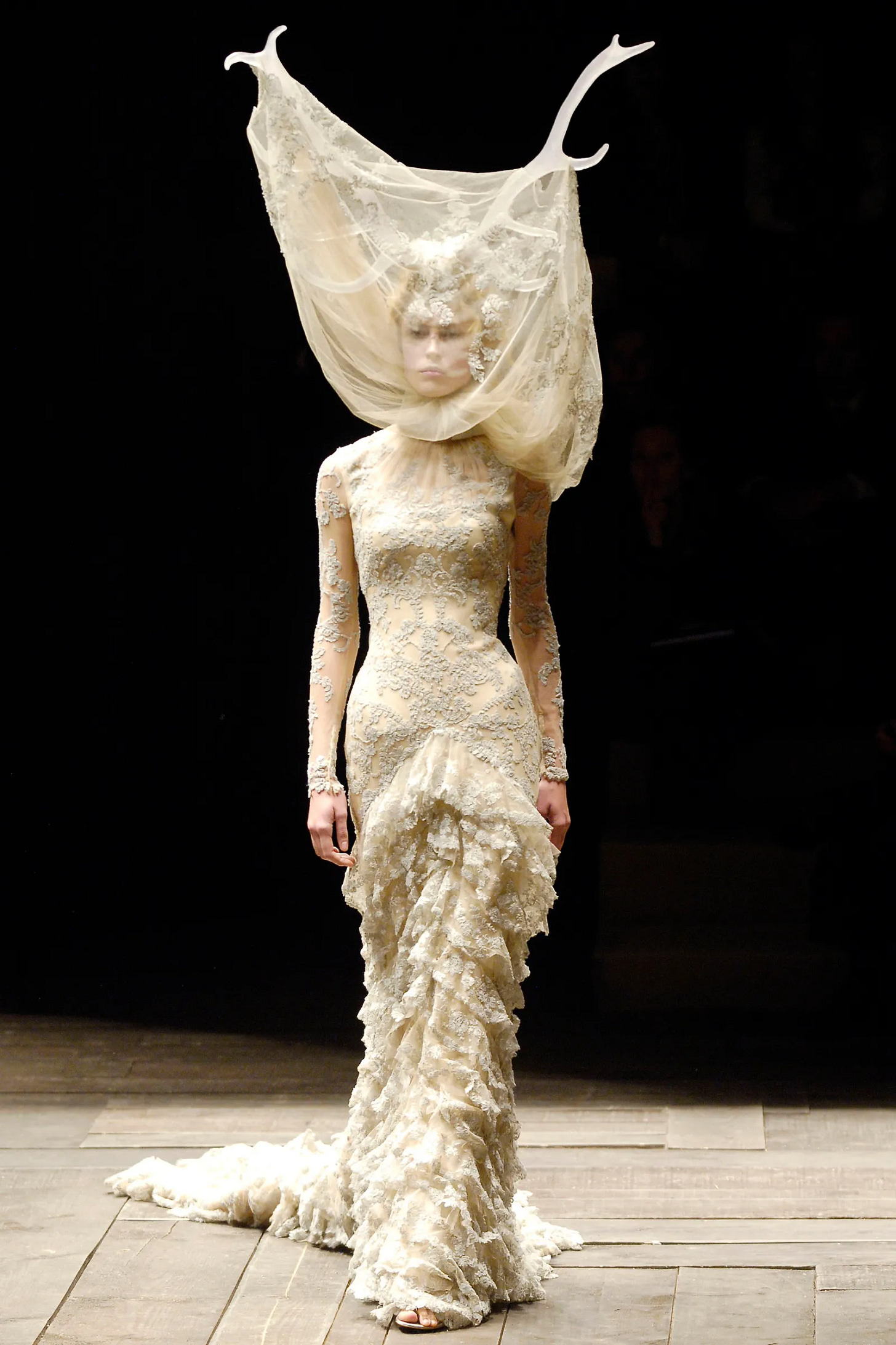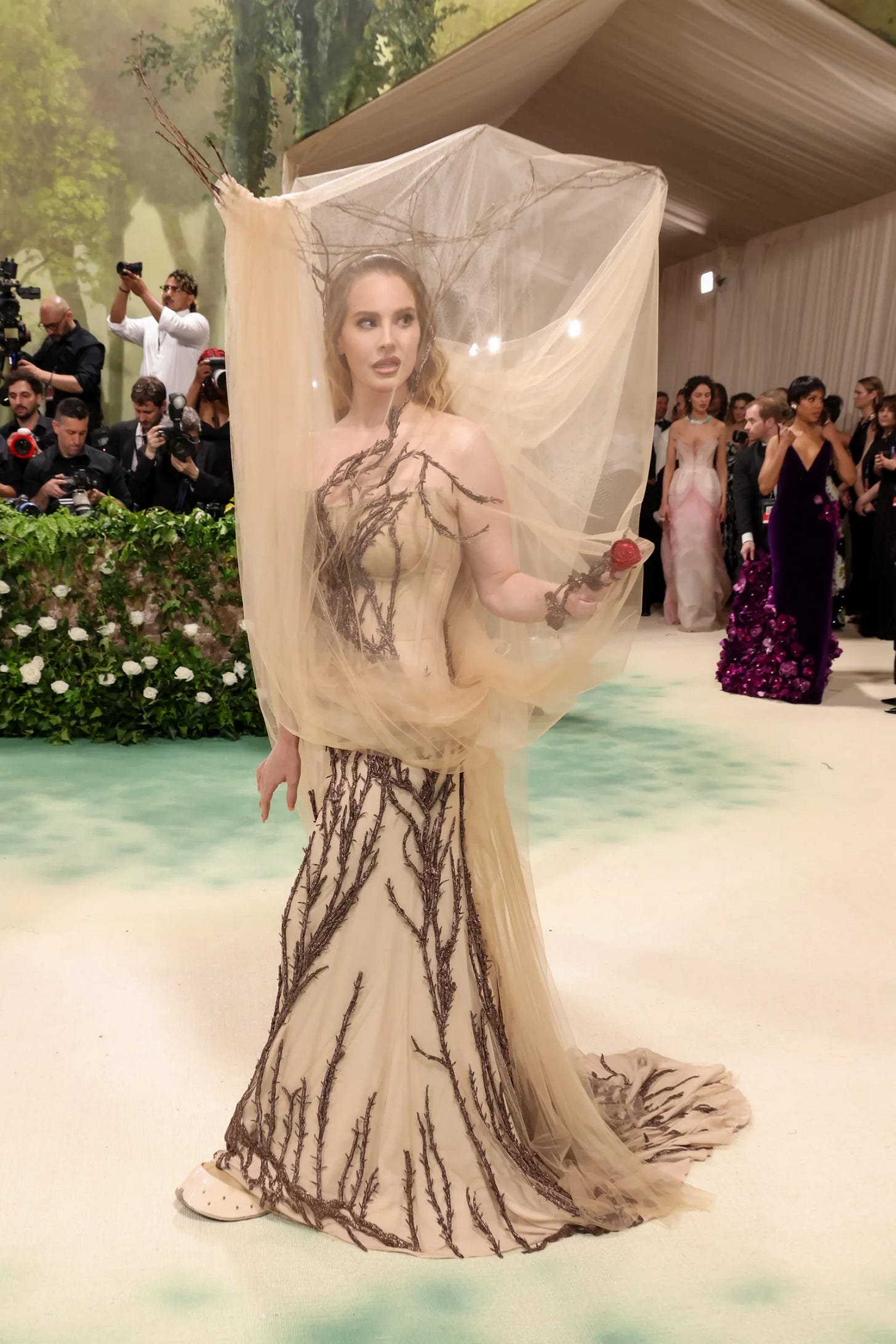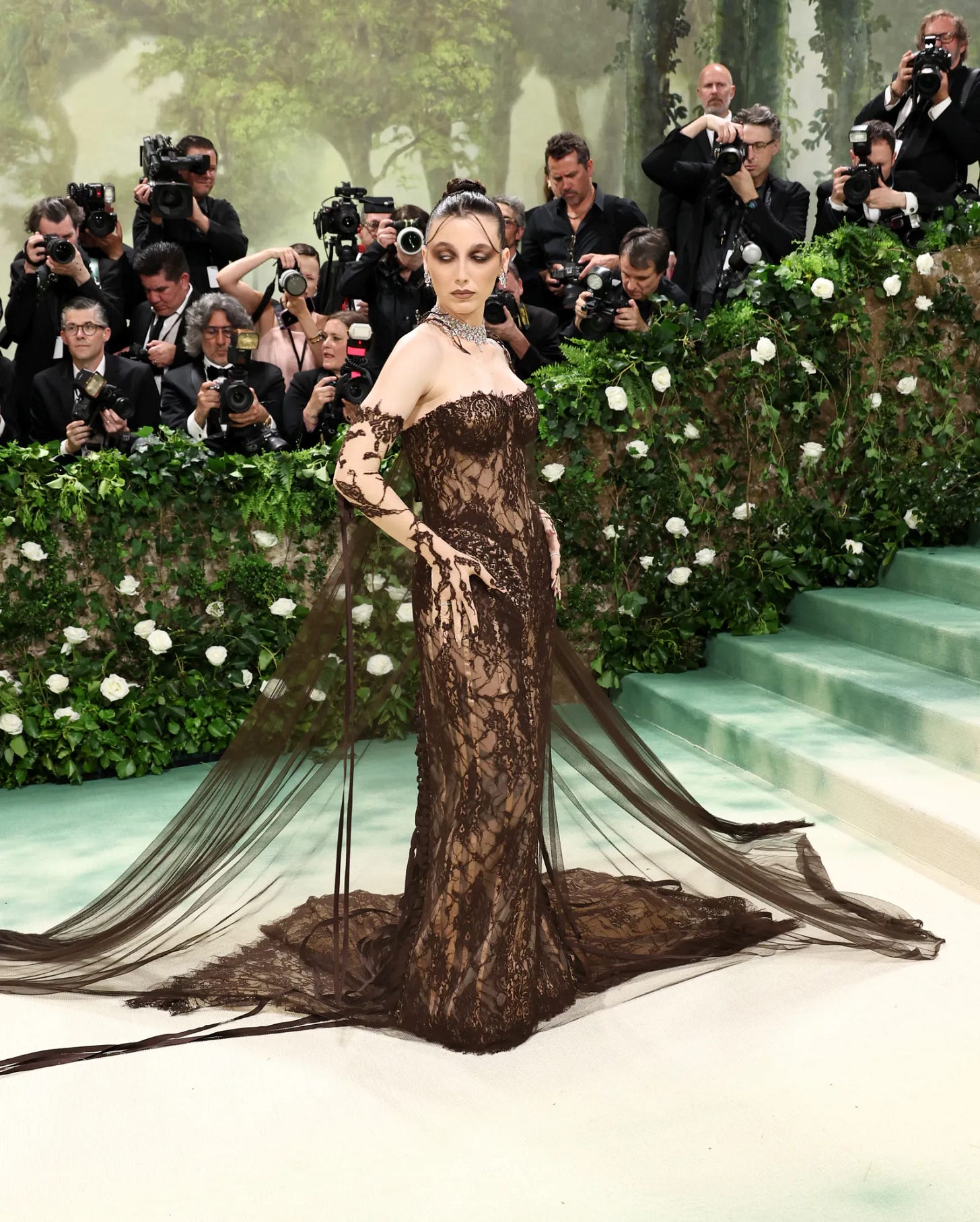Each year, on the first Monday of May, the Metropolitan Museum of Art in New York hosts the MET Gala, coinciding with the debut of a new exhibition. Centring around this year's exhibit, titled Sleeping Beauties: Reawakening Fashion, the gala serves as a platform to raise funds for the Costume Institute, the museums curatorial department dedicated to fashion and costume design.
Anna Wintour, Vogue's Editor-in-Chief and co-chair of the MET Gala, establishes an annual thematic dress code. This years theme, The Garden of Time, sparked boundless creativity among top designers collaborating with the A-list celebrities in attendance. Both the Costume Institute's exhibition and the dress code prompt reflection on the past and urge designers to look back in order to craft the new. By encouraging designers to rethink and innovate, the MET Gala transcends being solely a showcase for fashion. Instead, it becomes a platform for designers who are elevating garments beyond mere clothing, and transforming them into pieces worthy of museum display, synonymous with the highbrow aspirations of art. At the heart of the MET Gala lies a captivating interplay between art, fashion, history, and contemporary expression, where the past serves as both muse and validation for the present.
Art often draws from historical references, grounding creative production within established frameworks of legitimacy. Take for instance Pablo Picasso, who in 1957 embarked on a series of 58 paintings that were all inspired by Diego Velázquez's masterpiece Las Meninas (1656). Or perhaps Glenn Brown, who’s references range from 1970s sci-fi illustrations to the work of Willem de Kooning and Chaim Soutine. Among younger artists, Anna Weyant's name is rarely mentioned without associations to the figurative painter John Currin. And then there's the notable, Flora Yukhnovich, whose contemporary abstractions reflect the whimsical spirit of 18th-century French Rococo painters such as Francois Boucher.
Yukhnovich made headlines in 2021 when at 31 years old, and just 4 years after graduating from her Fine Art MA, her works began to sell for nearly 20 x their estimates at auction. Her painting I'll Have What She's Having (2020), estimated to sell for £60,000–£80,000, sold at Sotheby’s London in October 2021 for a staggering £2,253,500. The art historical grounding of her practice is widely credited for substantiating her meteoric rise and market appeal.
Much like art, fashion also partakes in this dance with history. It is said that fashion trends tend to repeat themselves every 20 years. This ‘20-year rule’ has meant that in recent times we have seen the return of the 70s flare, the 80s shoulder pad and the 90s choker.
Right now, fashions latest resurgence celebrates Y2K core, characterised by low-cut jeans, bedazzled crop tops, longline denim skirts and leopard print patterns. Brands like Miu Miu and Diesel have led the way in the revival of key 2000s wardrobe staples, pulling inspiration from the early millennium to fuel their 2024 collections and thus prompting the return of items like ‘the ballet flat’ back into popular favour. This goes hand in hand with the resurrection of the decades most notorious brands; Von Dutch, Juicy Couture and Ugg.
The poignancy of the 2000s comeback perhaps didn't go unnoticed by Wintour. Her floral MET Gala theme conjures the largely meme’d line from the iconic noughties film The Devil Wears Prada, in which Wintour herself is portrayed by a sarcastic and sharp-tongued Meryl Streep.
Florals? For Spring? Groundbreaking.
Whilst wearing florals in spring is hardly groundbreaking, neither is the notion of drawing inspiration from the past. These systems of self-reference have been inherent in art and fashion for centuries. Time and time again, artists and designers draw upon the visual language of the past to inform and validate the present, anchoring contemporary creations within pre-existing canons. This hypothesis is central to understanding the significance of this years MET Gala, which wholeheartedly celebrates the benefits of ‘looking back’.
Traditionally, ‘the past’ might be viewed as a repository for historical evidence, preserving the artefacts of bygone eras for study and reflection. Yet at this years MET gala, ‘the past’ instead became a space to revive unfinished stories and untold narratives, where designers could delve into the archives to conceptualise their impending creations. Just as contemporary artists often breathe life into art historical motifs, at the 2024 MET Gala designers reimagined iconic fashion moments into fresh show-stopping ensembles.
Nicole Kidman’s Balenciaga dress was a stand out of the night. Originally part of Balenciaga’s spring 1951 collection, it was immortalised in an image by the celebrated photographer Richard Avedon. Over the course of 800 hours, the couture dress was recreated with hand embroidery. 3000 feathers were meticulously applied using 150 meters of silk organza - each cut by hand, folded, pleated and finally hand-frayed.
Fresh off headlining the Coachella music festival last month, Lana Del Ray attended the MET wearing Alexander McQueen. The house reimagined an archival look from their Autumn/Winter 2006 show The Widows of Culloden by dressing Del Ray in a signature gown, with a statement headpiece and delicate tulle veil.
Emma Chamberlain returned to The MET Gala as Vogue's special correspondent, interviewing some of the biggest stars on the carpet. This year she channeled a gothic aesthetic that eluded to the dark underbelly of the garden. Dressed by Jean Paul Gaultier, the house drew inspiration from their Spring 2003 couture show called Morphing.

Entrepreneur Sabrina Harrison arrived at The MET dressed by CHRISHABANA. Her gown echoed the melting clocks of Salvador Dalí's 1931 painting The Persistence of Memory, and her futuristic gold bag was adorned with a functional video screen playing footage of last year's red carpet.
These looks not only nod to the cyclical nature of fashion, they also serve as a reminder that it’s not just about what we wear, but about the stories we tell through clothing, the connections we make to the past, and the possibilities we envision for the future.
As we revel in the spectacle of The MET Gala, let us celebrate the transformative potential of fashion and art to reawaken our senses. They are a testament to the enduring power of collaboration and innovation in shaping institutional memory and collective imagination. As cultural touchstones they reflect the ever-evolving relationship between creativity and history, uniting us in a shared appreciation for the beauty of the past and the promise of the future.





